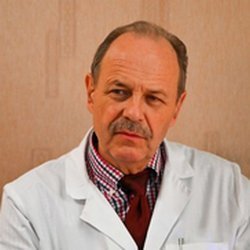Number of severe forms of Covid-19 in Tatarstan doubles over the year, and asymptomatic — decreases by 5 times
What doctors know about coronavirus today: vaccines, treatment, statistics, forecasts
What are the main features of the “autumn wave” of coronavirus? Does the delta strain differ in the clinical picture of the disease it causes from its predecessors, if so, how? What is the incidence level of Covid-19 and the mortality rate from it in Tatarstan from the point of view of the situation in the country as a whole? This and many other points were discussed at the medical conference “Infections and somatic pathology in the practice of a therapist and pediatrician. New realities in the context of the pandemic.” Read the details in the material of Realnoe Vremya.
There are fewer and fewer mild and asymptomatic forms
At the medical conference “Infections and somatic pathology in the practice of a therapist and pediatrician. New realities in the pandemic”, leading experts of Tatarstan and Russia discussed the issues related to the coronavirus. Doctors have already gained a lot of experience in his treatment, and nevertheless, even after almost two years of the COVID-19 pandemic, there are still many unknowns.
“We already know a lot about coronavirus infection, but at the same time, we don't know anything," says epidemiologist, chief specialist of the Ministry of Healthcare of Tatarstan on vaccination Dmitry Lopushov.
Comparing the situations in 2020 and 2021, doctors note clear changes in the way the disease goes: there is a tendency to a more severe form.
So, in particular, according to Lopushov, this year the number of medium-severe forms has increased by 30% in the republic. If in 2020 it was 40%, then this year it is as much as 70%. The share of severe forms of COVID-19 has doubled from 2% to 4%. The cases of mild form has become 20% (in 2020, there were 26% of them). The proportion of asymptomatic forms also decreased by as much as 5 times — from 32% to 6%.
Due to that there are more severe forms, the burden on the healthcare system has significantly increased, according to doctors working in covid hospitals.

Insidious “delta”
Since the previous, third peak of morbidity (now, according to the epidemiologist, it is being the fourth), the incidence of Covid-19 among pregnant women has almost doubled. The new infection in them can lead to terrible complications: premature birth, miscarriages, and even deaths.
Young people have become infected with Covid-19 more often, says the chief infectious disease specialist of the Ministry of Healthcare of Tatarstan, MD, Associate Professor of the Department of Pediatric Infections of the Kazan State Medical University, Khalit Khaertynov. And they can also get infected in a severe form. For example, more recently, at the end of September, Khaertynov witnessed an extremely severe forms of coronavirus in a patient who is only 23 years old. There are other insidious features of the delta strain that doctors have not observed before:
- the disease develops aggressively. Progression from CT-1 to CT-3 occurs rapidly — in two to four days;
- desaturation is already observed with CT-1;
- sometimes doctors are faced with that the treatment has low effectiveness.

The delta strain is more contagious than its predecessors.
Doctors are very concerned that the coronavirus has already reached children, who at the beginning of the pandemic were much less susceptible to it compared to adults.
“In 2021, we note an increase in the proportion of cases among the child population by almost 15%," says Lopushov.
Tatarstan and Russia: sad figures
The incidence of coronavirus is growing in Tatarstan. According to Dmitry Lopushov, since the beginning of the pandemic, more than 30,000 cases of laboratory-confirmed Covid-19 have already been registered in the republic, more than a thousand Tatarstan citizens have become victims of it.
According to the federal register for COVID-19 (this includes all cases, regardless of laboratory confirmation), the incidence of coronavirus and pneumonia per thousand population per year is 52,5. The absolute number of cases in the republic is 156,590. This is one of the lowest rates in the Volga Federal District.
In general, the situation with coronavirus in Russia is very alarming.
“If you look at the situation that we have been observing in the last 28 days, Russia is the third in the world in terms of the number of COVID-19 cases and deaths from it," says Khalit Khaertynov. “Over the past 90 days, there has been an increase in morbidity, especially during the last month, and an increase in mortality from coronavirus infection. The situation in Tatarstan does not differ from the general situation in the country. At the same time, in recent days we have noted a slight decrease in the number of hospitalisations of patients with COVID-19, which inspires some optimism. Perhaps, we are being at the beginning of a decline in morbidity, although it is, of course, premature to talk about some kind of turning point.”
Coronavirus has become the second most common cause of death in the population, Lopushov reported sad statistics.
How is the fight against coronavirus going in Tatarstan
A high increase in morbidity, combined with an increase in the proportion of moderate and severe forms, requires the most active measures to combat coronavirus. This is precisely what the introduction of strict restrictions on entry into public places is connected with. Here are just some figures.
- Fifty-eight temporary infectious diseases hospitals have been deployed in the republic.
- The number of beds has been increased almost 2 times in 2 months and today it is already over 7 thousand.
- More than 17,000 medical workers have been involved in providing medical care to patients with Covid-19 in repurposed hospitals.
- Since July 1, 82 medical organisations have been conducting in-depth medical examinations for those suffered from Covid-19.
The programme “Virtual medical round” operates — telemedicine consultations with the participation of leading experts of Tatarstan, who supervise almost all temporary infectious diseases hospitals. Thanks to this, many hundreds of lives have been saved. A programme is being implemented to provide patients with Covid-19 who are treated at home with preferential medications. Moreover, as Lopushov emphasised, treatment is prescribed immediately even if Covid-19 is suspected, without waiting for laboratory confirmation of the fact of infection. Money for this has been allocated from both the federal and republican budgets.
It costs 400 thousand rubles to cure a patient from Covid-19, to vaccinate — 2,000
Well, the main way to fight coronavirus, as doctors never tire of repeating, is vaccination.
“We continue to inform the population that up to 400 thousand rubles are spent on the treatment of one COVID-19 patient. The vaccination of one person is about 2 thousand, if we are talking about a two-component vaccine," Dmitry Lopushov stressed.
Vaccination significantly reduces both the risk of severe disease and the risk of infection itself, doctors say.

Besides, some foreign studies indicate that the effectiveness of protection against the new infection increases with the introduction of the third, so-called booster dose of the vaccine.
“Just two weeks ago, an article about vaccination was published in New England Medical Journal," said Anokhin. “Its authors examined the results of more than a million people over 60 years old who were fully vaccinated. Some of them received the third dose of the vaccine. Thus it was established that those who were vaccinated with three doses, the frequency of severe coronavirus infection was almost 20 times lower than those who were vaccinated twice. And the incidence of the disease itself in the first category was 11 times lower.”
As for our domestic vaccine Sputnik V, according to both Anokhin and other experts present at the conference, it is absolutely safe and effective.

Moreover, vector (such as our Sputnik) and mRNA vaccines against coronavirus, according to the expert, are considered the strongest in the scientific community. The effectiveness of inactivated vaccines is also quite high — at least 70%, but still not the same as that of vector and mRNA vaccines, says Netesov.
Who is to blame for the low rates of vaccination in Russia?
Russia is seriously lagging behind in terms of vaccination rates, the expert notes. As of October 14, 2021, more than 80% of the population has been vaccinated with at least one dose in Spain, Portugal, the UAE, Singapore, Cuba, mainland China and many other countries. In the UK, Italy, Japan — more than 70%, and, finally, in Germany, Israel, Turkey, the USA and other countries — more than 60%. In Russia, by that time, only about 38% of residents had received the first component of the vaccine, and 32,4% received two doses.
The reason for this situation, according to Netesov, lies in that the campaign to promote the vaccine was improperly organised. Sputnik V advertising managers on the official website of the drug do not explain to the population the real severity and duration of post-vaccination reactions. Besides, two publications about the vaccine, which were published in very reputable foreign scientific journals The Lancet and Vaccines, have never been posted on the site in a translated form into Russian.